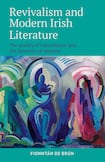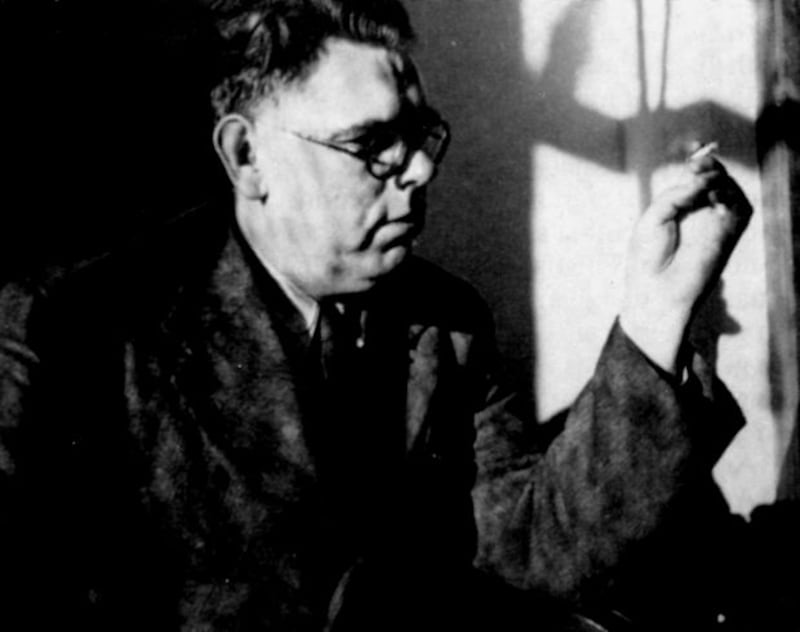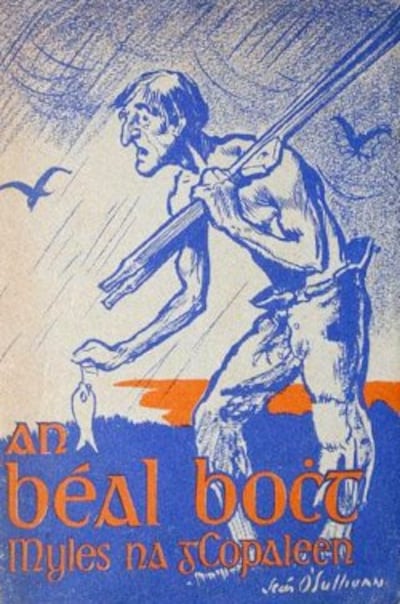
There have been times when the debate about reviving Irish seemed more like an undignified squabble over who exactly had responsibility for the corpse. And there were people who took a professional interest in the imminent death of Irish so that they could perform miracles of apparent resuscitation in the A&E ward.
In this luminous and audacious study, Fionntán de Brún recalls how often Máirtín Ó Cadhain complained that death was synonymous with the study of Irish and of folklore. Ó Cadhain contended that “the collected forces of academia and state-sponsored heritage preservation amounted to a small triangle in Dublin city centre that one might call Príomh-Chill Éireann: An Chré Mharbh (The Chief Cemetery of Ireland: the Dead Clay)”.
Ó Cadhain attacked a twofold funding increase awarded to the Folklore Commission at a time (1949-50) when it was suggested that funding for Irish-language magazines be reduced. He believed that more money should be directed to the just-about-surviving community of the Gaeltacht; but whenever that was done, Dublin Opinion ran cartoons scoffing about grants awarded in “the land that lost the leprechaun but found the pot of gold”. There were no easy solutions.
Yet the history of literature, as Thomas Carlyle said, is a history of revivals – usually found in a return from artifice to the speech of people. The corpse, in the event, was proving to be super-truculent. By 1949 Ó Cadhain himself had published Cré na Cille, one of the great novels of the 20th century, reporting the babble of buried bodies in a cemetery in Connemara.

Fionntán de Brún is no state pathologist but he has now produced a critical history of “revivals”, covering centuries from 1600 to the present. It is a work of panoptic brilliance. Although he can settle on no overarching theory of revival, he points repeatedly to the strongly religious associations of the word and idea over many periods.
Contesting the once-accepted idea that Gaelic Ireland missed out on the Renaissance, he points to many works which exhibit its vernacular humanism – Betha Colaim Cille being a case in point. But his first major focus is on the astonishing resurgence of writing after the Flight of the Earls, much of it produced in continental cities by men who knew how to Europeanise art without de-Gaelicising it.
Dead and living
This work was mainly a response by clergy of the Counter-Reformation to the printing of bibles in Irish – and (most of all, I think) to the printing in that language of the Book of Common Prayer. That remarkable book held that the dead could neither speak nor be spoken to in the funeral service – they had gone beyond human contact.
The central achievement of Gaelic literature would turn out to be a flouting of that rule: for de Brún, one meaning of “revival” is that the dead and living maintain a steady and developing dialogue. In Ireland, the dead have votes and voices, which they use early and often.
The models laid down after 1600 by writers such as Seathrún Céitinn would be emulated, three centuries later and in the English language, by another Euro-Gael named John Millington Synge. And in our own time, the lives and thoughts of those generations who wrote immediately before and after Céitinn have inspired major novels in Irish by artists such as Liam Mac Cóil and Breandán Ó Doibhlín.
The word “revival” would acquire, by the 19th century, a specific theological meaning for Protestants, who were often to the fore in city-based movements designed to preserve elements of Gaelic culture. One needed, opines de Brún, a certain distance from that culture in order to appreciate how deep its looming crisis was. By the time of the Anglo-Irish Literary revival at the end of the Victorian era, much of its underlying energy arose from a debate among Protestant intellectuals as to how best they might contribute to an Irish Risorgimento.
This element has been seriously neglected in our current Decade of Commemoration: but the late Vivian Mercier was not being entirely whimsical when he suggested, as far back as the 1970s, that one could be forgiven for thinking that the chief purpose of the Irish literary revival was to provide employment for the sons and daughters of Protestant rectories.
Immense subtlety
De Brún makes deft use of psychoanalytic theory from Freud to Lacan, in readings of immense subtlety. While in no way reducing literature to disguised biography, these offer surprising familial and personal contexts that will forever enrich our understanding of Cré na Cille and An Béal Bocht.

The latter work he shows to be the outcome of Brian Ó Nualláin’s status as a non-Gaeltacht Gaeilgeoir, who mocked the idea of the Gaeltacht as a locus of official desire. It could never hope to live up to all those evasive dreams invested in it as a place of authenticity.
Yet that reading is then balanced by a wonderful analysis of Nuala Ní Dhomhnaill’s mermaid poems as a reflection upon what happens when a people loses touch with key truths in its collective unconscious.
Is there no overarching theory? Is revival a matter sometimes of “being”, sometimes of “becoming”? A project that must necessarily be forever deferred? George Sigerson, a lesser-known leader of the literary movement a century ago, believed in a cyclical version of the Irish past. The national psyche went from periods of strong self-assertion to dire self-abnegation. Sigerson was a zoologist and psychoanalyst who had studied in Paris under Charcot, an early diagnostician of schizophrenia. He noted how the progress of Cuchulain in the national saga was marked by “phases of long inexplicable debility” (when he was compelled to retire from the field of conflict) followed by periods of sudden arousal (as in the famous riastra or battle cry).
Like all radical intellectuals, De Brún is somewhat sceptical of cyclical theories of history (hinting that at times they verged on sentimentality in the 1966 commemorations of the Rising). But he is honest enough to find them also inspiring the dialectics of liberation espoused at that same time by Máirtín Ó Cadhain. Perhaps, a subject for a second book lies here? But this intrepid study gives us plenty of ideas to be going on with.
Declan Kiberd teaches at the University of Notre Dame. His most recent book, After Ireland: Writing the Nation from Beckett to the Present, is in paperback from Head of Zeus









